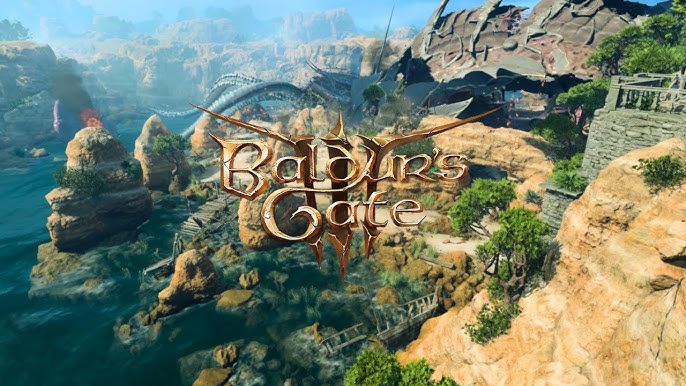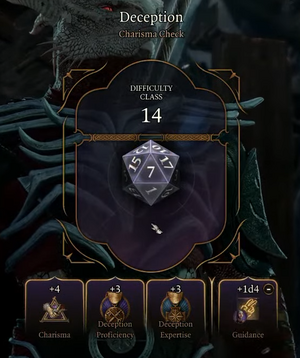Baldur's Gate 3 Review: A Triumphant Return to Form for PC Gaming?

Baldur's Gate 3 has been a long time coming, and the hype surrounding its release has been nothing short of monumental. As a seasoned PC gamer with countless hours logged in CRPGs, from the original Baldur's Gate to Divinity: Original Sin 2 and beyond, I approached Larian Studios' latest offering with a mix of excitement and cautious optimism. Does it live up to the legacy of its predecessors? Does it successfully translate the complexities of Dungeons & Dragons 5th Edition to the digital realm? And most importantly, is it a must-play for PC gaming enthusiasts? Let's dive in and find out, exploring the game's mechanics, narrative depth, graphical fidelity, and PC performance. We will also discuss the best class for beginners to give you a head start on your journey.
Gameplay & Mechanics: D&D 5e Reimagined
Larian Studios faced a daunting task: adapting the intricate ruleset of Dungeons & Dragons 5th Edition into a cohesive and engaging video game experience. For the most part, they've succeeded admirably. The core mechanics of D&D, including advantage/disadvantage, saving throws, and the plethora of spells and abilities, are all present and accounted for.
Dice Rolls: Organic or Disruptive?
The dice roll mechanic is central to Baldur's Gate 3. Every action, from attacking an enemy to persuading a guard, is governed by a virtual die roll. While this adheres faithfully to the tabletop experience, it can occasionally feel disruptive to the flow, especially when a crucial moment hinges on a single, unlucky roll. However, Larian has implemented systems to mitigate this, such as inspiration points that allow for rerolls, and the ability to gain advantage in certain situations. Ultimately, the dice rolls add an element of unpredictability and tension that enhances the strategic depth of combat and dialogue encounters.
Combat: Evolution or Departure from Divinity: Original Sin 2?
Those familiar with Divinity: Original Sin 2 will find Baldur's Gate 3's combat system familiar, yet distinct. It retains the turn-based, tactical focus of Divinity, but with a greater emphasis on verticality, environmental interactions, and adherence to D&D 5e rules. Unlike Divinity, armor is not directly reduced by physical or magical damage; instead, the focus is on hitting AC, applying conditions, and exploiting vulnerabilities based on the D&D ruleset.
Environmental interactions are pivotal. You can set the ground ablaze with fire spells, create ice surfaces to impede enemy movement, or collapse unstable structures to deal massive damage. Verticality also plays a crucial role, granting ranged attackers significant advantages.
One encounter that showcases the mechanics well is the fight against the Gnolls in the Risen Road area early in Act 1. You can use the environment to your advantage by collapsing the wooden scaffolding above the Gnolls, dealing significant damage and potentially knocking them prone. Alternatively, you could use spells like Grease to create a slippery surface, making it difficult for the Gnolls to reach your party.
However, the mechanics can sometimes fall short. The AI, while generally competent, can occasionally make questionable decisions, such as ignoring obvious environmental hazards or focusing on low-priority targets. Additionally, the sheer number of abilities and spells available can be overwhelming, especially for new players. For example, during the fight with the Hag, Auntie Ethel, the AI can get confused on how to attack her illusions making for an odd encounter.
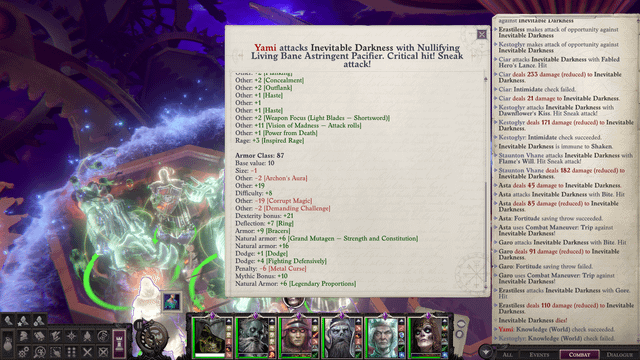
Narrative Analysis: Choice, Consequence, and Companions
Baldur's Gate 3 truly shines in its narrative depth and the impact of player choices. The branching narrative is intricate and far-reaching, with decisions made in the early hours of the game having significant consequences down the line. This creates a genuine sense of agency and consequence, making each playthrough feel unique. Baldur's Gate 3 Story Choices matter!
Impactful Decisions and Consequences
One example of an impactful decision is whether to side with the Tieflings or the Goblins in Act 1. Choosing to defend the Emerald Grove leads to a completely different storyline than siding with Minthara and raiding the Grove. These choices not only affect the immediate outcome of the conflict but also shape the relationships with your companions and the overall trajectory of the story.
Companions: Deep, Complex, and Emotionally Resonant
The companions in Baldur's Gate 3 are among the most well-written and compelling in any CRPG I've played. Each companion has a unique backstory, personality, and personal questline. Romancing Minthara, for example, provides an entirely different gameplay experience. Their stories are interwoven with the main narrative, and their approval or disapproval of your actions can significantly impact their loyalty and willingness to fight alongside you. This is a hallmark of all quality companion guides.
Comparing the companion relationships to Dragon Age: Origins, Baldur's Gate 3 arguably surpasses it in terms of depth and complexity. While Dragon Age had memorable characters, BG3's companions feel more fully realized and reactive to your choices. The game successfully creates emotionally resonant moments through well-written dialogue, excellent voice acting, and meaningful interactions between characters. One notable example is the relationship between Shadowheart and Lae'zel, which evolves from animosity to respect and even friendship over the course of the game.
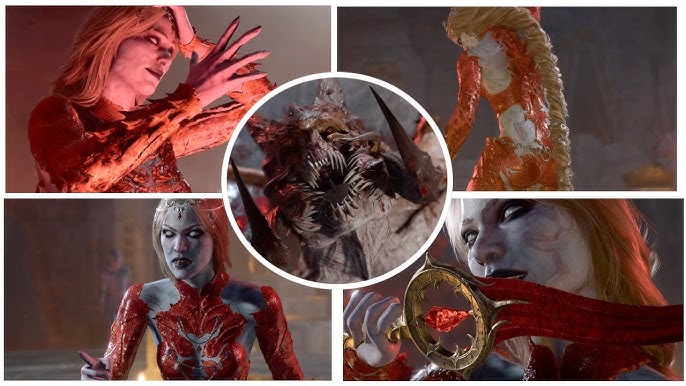
Graphics: A Visual Feast
Baldur's Gate 3 is a visually stunning game. The character models are highly detailed, with realistic facial animations and expressive eyes. The environments are equally impressive, ranging from the lush forests of the Emerald Grove to the decaying ruins of abandoned temples. The art style strikes a balance between grounded realism and fantastical elements, creating a world that feels both believable and magical.
Lighting and Atmosphere
The game effectively uses lighting and shadows to create atmosphere. The Overgrown Ruins in Act 1 are a prime example. The interplay of light filtering through broken archways and casting long shadows across crumbling walls creates a palpable sense of decay and mystery. This attention to detail contributes significantly to the overall immersion of the game.
 One of the most impactful visual changes to the game has been an improvement to character appearances.
One of the most impactful visual changes to the game has been an improvement to character appearances.

PC Performance: A Tale of Two Acts (and a Troublesome Third)
Baldur's Gate 3 PC Performance can vary wildly depending on your system configuration. While the game generally runs well on high-end hardware, it can struggle on older or less powerful machines. Act 3, in particular, has been a source of frustration for many players due to noticeable frame rate drops and stuttering. Let's dive into specific benchmarks:
Benchmarks
- RTX 3070: At 1440p with high settings, the RTX 3070 averages around 60-70 FPS in Act 1 and Act 2. However, in Act 3, the frame rate can dip to 40-50 FPS in densely populated areas.
- Radeon 6800 XT: The 6800 XT performs similarly to the RTX 3070, averaging around 65-75 FPS at 1440p with high settings in the first two acts. Act 3 presents similar performance challenges.
- RTX 4000 Series / Radeon 7000 Series: The latest generation cards fare much better, maintaining a stable 80-100+ FPS at 1440p with ultra settings throughout most of the game. However, even these cards can experience occasional dips in Act 3.
Graphics Settings and Performance
The Baldur's Gate 3 Graphics Settings have a significant impact on performance. Lowering settings such as shadows, lighting, and crowd density can noticeably improve frame rates, especially in Act 3. Ray tracing, while visually appealing, is particularly demanding and can significantly impact performance on even high-end cards.
Act 3 Performance Issues
The Baldur's Gate 3 Act 3 Performance Issues stem from the increased complexity and density of the environments. The city of Baldur's Gate is filled with NPCs, detailed textures, and complex lighting effects, all of which put a strain on the CPU and GPU. Larian has acknowledged these issues and is working on optimizations to improve performance in future patches.
Loading times are generally reasonable on SSDs but can be lengthy on traditional hard drives. The game utilizes a significant amount of system memory, so 16GB of RAM is highly recommended, and 32GB is ideal.
Overall Experience: A New Benchmark for CRPGs
Baldur's Gate 3 is a triumph. It's a sprawling, ambitious, and deeply rewarding CRPG that sets a new benchmark for the genre. It has some weaknesses, such as Act 3 performance issues and occasional AI quirks, but its strengths far outweigh its flaws.
Comparison to Other Titles
Compared to Divinity: Original Sin 2, Baldur's Gate 3 offers a more refined and immersive experience. The narrative is more complex and engaging, the companions are more compelling, and the adherence to D&D 5e rules adds a layer of strategic depth that was missing in Divinity. Compared to Pillars of Eternity, Baldur's Gate 3 boasts superior graphics, more dynamic combat, and a more accessible narrative.
Is Baldur's Gate 3 Worth It?
So, is Baldur's Gate 3 worth buying on PC? Absolutely. Despite its performance hiccups, particularly in Act 3, the game's compelling narrative, engaging gameplay, stunning visuals, and deep character development make it a must-play for any PC gaming enthusiast, especially those who appreciate CRPGs. It is a game that will stay with you long after the credits roll.
Final Score: 9.5/10
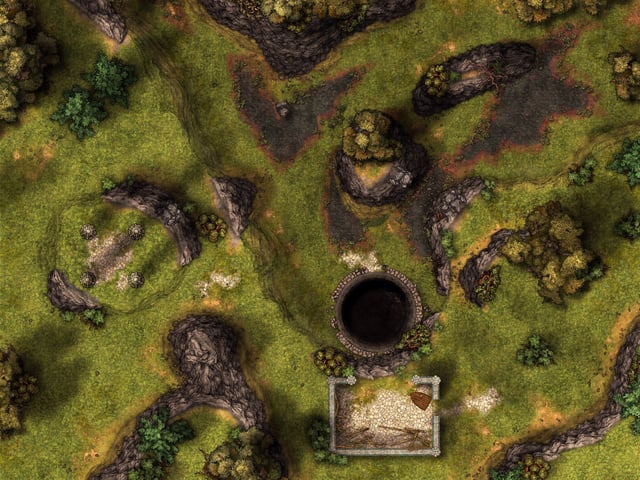
FAQ Section
Q: What are the best graphics settings for Baldur's Gate 3 on PC? A: This depends on your hardware. Start with the "High" preset and then tweak individual settings. Shadows, lighting, and crowd density have the biggest impact on performance. Consider turning off ray tracing if you are experiencing performance issues.
Q: How does Baldur's Gate 3 compare to Divinity Original Sin 2? A: Baldur's Gate 3 builds upon the foundation of DOS2, offering a more refined combat system, a deeper and more branching narrative, and more compelling characters.
Q: What is the story like in Baldur's Gate 3? A: The story in BG3 starts with you as a victim of Mind Flayer abduction. A parasite is implanted in your brain, but you do not turn, and embark upon a journey with others like you to find a cure. It is vast, branching, and filled with memorable characters and impactful decisions. The consequences of your choices shape the world around you and determine the fate of its inhabitants.
Q: How well does Baldur's Gate 3 run on a RTX 3070? A: An RTX 3070 can run Baldur's Gate 3 at 1440p with high settings, achieving 60-70 FPS in Acts 1 and 2. However, expect frame rate drops to 40-50 FPS in densely populated areas of Act 3.
Q: Why is Act 3 of Baldur's Gate 3 performing poorly? A: Act 3's poor performance stems from the increased complexity and density of the environments, particularly the city of Baldur's Gate, which is filled with NPCs, detailed textures, and complex lighting effects.
Q: How does Baldur's Gate 3 use dice rolls?
A: Dice rolls are integrated into almost every aspect of the game. Every action, from attacking an enemy to persuading a guard, is governed by a virtual die roll that uses D&D 5e mechanics.
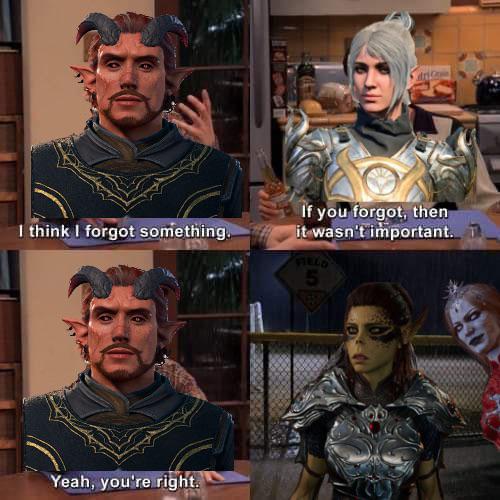
Related Articles
- Baldur's Gate 3: Best Class for Beginners
- Baldur's Gate 3: Companion Guide
- Baldur's Gate 3: PC Performance Optimization Tips
